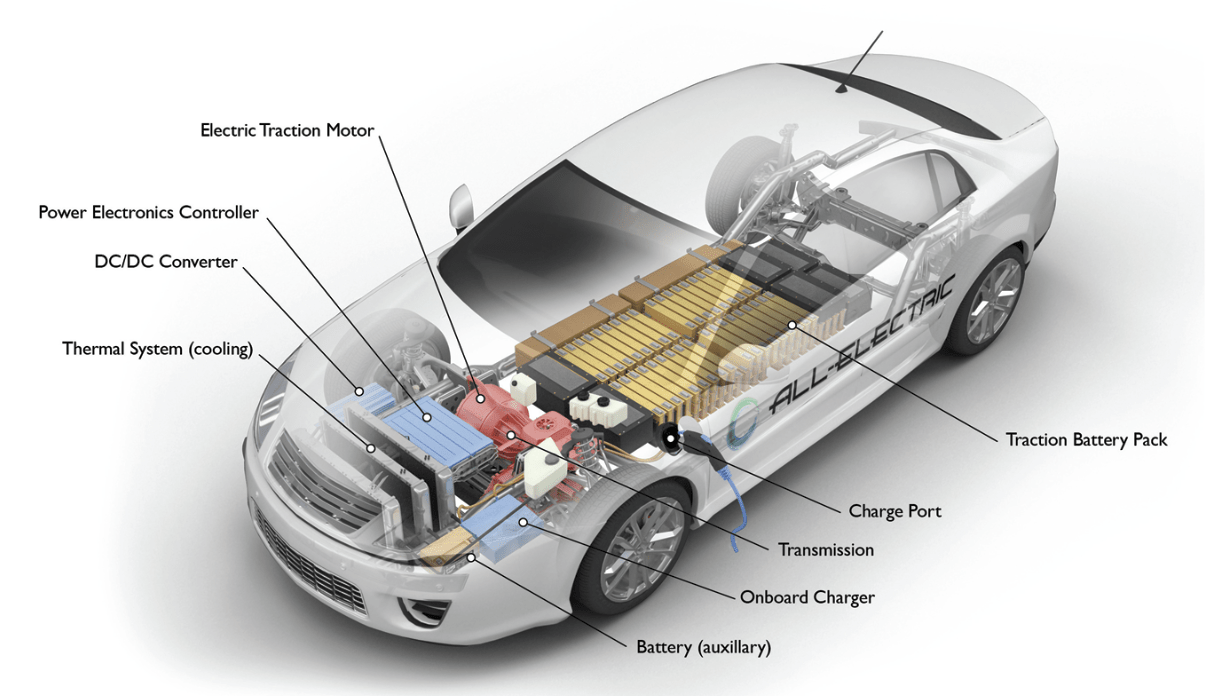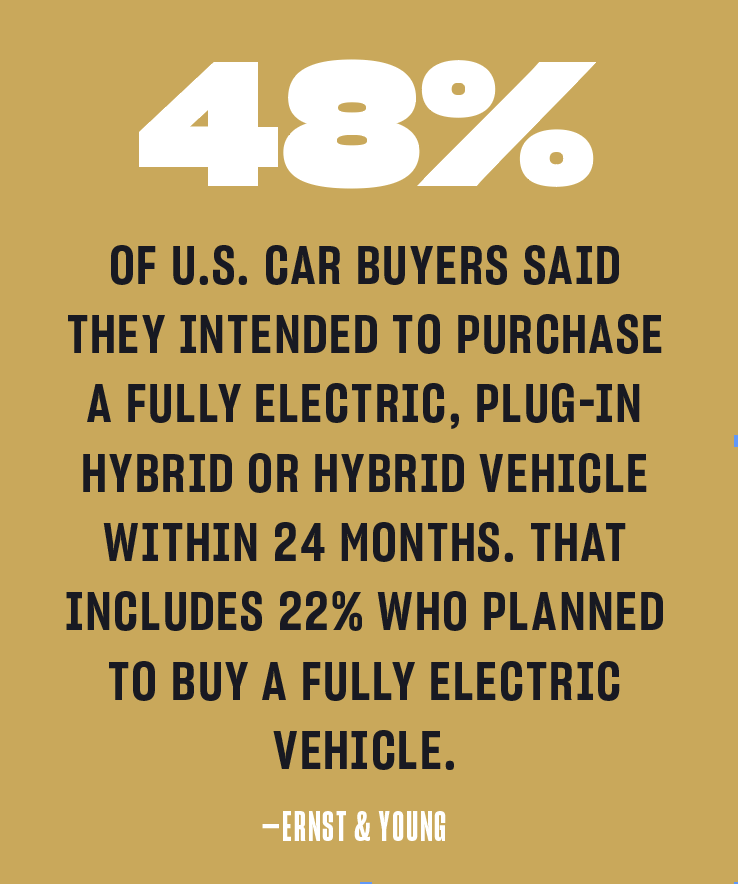Adoption Issues
Two experts assess EV appeal, environmental impact, jobs, and prices

Will electric cars help save the planet? To explore that issue, we posed the same questions to two electric car fans. One is a scion of a prominent political family, veteran in the clean-technology industry and activist committed to the creation of a zero-emission future. The other is a physicist, columnist, author, entrepreneur and self-described technology pundit who thinks the climate-saving potential of vehicle electrification is misguided and, at best, wishful thinking.
LUCKBOX: Are electric vehicles cleaner than internal combustion vehicles?
Albert Gore: They are. In fact, it’s really not even close considering all the upstream emissions in the manufacturing process, including mining of critical minerals. If you’re doing a full lifecycle analysis, it’s two to three times less carbon-intensive to own an electric vehicle than an internal combustion engine vehicle because you need to consider all the emissions associated with oil and gas production.
Something like 80% of the emissions associated with a gas vehicle are during the use phase because of the combustion of fossil fuels and all the related emissions in producing, transporting and distributing the fossil fuels and fossil fuel infrastructure. The major benefit of electricity as a transportation fuel is that it will get significantly cleaner over time.
Mark Mills: The short answer is no. But that of course depends on what you mean by clean. There are air pollutants in urban areas from vehicles. Because EVs have no tailpipes, they, by definition, have no pollutants in the urban zones. And if you want to make a dense urban core cleaner from the viewpoint of photochemical smog, an EV is a good thing.
But look at the materials. Eighty-five percent of the weight of a conventional vehicle is iron and steel. Iron is a common element, easy to make and has very, very low environmental impact by metal standards. But 85% of an EV is a soup of other metals, like aluminum, copper, nickel and manganese. These are extremely challenging metals to produce. EVs are just differently dirty than conventional vehicles.

Other than environmental impact, why would someone buy an electric vehicle?
Gore: The No. 1 reason is it’s a great product. EVs have a lot of advantages, compared to the cars that we’ve all grown up with. They’re fun to drive. They are more convenient for people who have access to charging where they park, whether it’s at home or where they work. Of course, that isn’t universally available. But people with access to charging at one of those two places don’t think about refueling very often.
mills: Electric motors have what engineers call infinite torque at zero load. That means coming off the line. Everybody who has driven a golf cart knows you get a bounce back. And, of course, Teslas have the “insane” acceleration mode. So that’s a lot of fun. The EV drivetrain also offers fun stuff, like you can drive each wheel independently, make the vehicle crab walk, rotate on its center axis—all kinds of cool stuff.
Are EVs simply too expensive for most people?
Gore: The average transaction price of a new vehicle in the United States is a little over $48,000. And the average transaction price of an electric vehicle is a little over $50,000. Each is very expensive. I think the cost curve for electric vehicles is very highly correlated to the volumes in which they and their major components are produced, including batteries.
The cost of electric vehicles is coming down significantly and very quickly. We are on the cusp of price parity with internal combustion. Several models out now cost below the average. Some of the top-selling models are in the $40,000 range, before factoring in the $7,500 credit.
mills: Right now, with the glut on showroom floors, lots of automakers are losing a lot of money. The glut will result in lower consumer prices temporarily, but that’s not because they’re cheaper cars.
The significant difference is the “fuel tank,” and the battery is where all the price difference comes from. It roughly comes in at $10,000 to $15,000 on average per car. Most everything is about the future price of the battery. All this hand waving about batteries getting cheaper is infantile and naive. It’s a half-ton electrochemical machine for which between 50% and 80% of its cost is tied up in its bill of materials.

Why have electric powertrains become the go-to choice for making vehicles cleaner?
Gore: Physics is the primary culprit. Gasoline engines are up against the limit of how much more efficient they can get. Hybrid technology can offer a lot in terms of emissions reductions, but it’s not close to what full electric operation of the vehicle offers. I think hydrogen holds a lot of promise for a lot of applications, including potentially for some heavier classes of vehicles, and marine and aviation applications. But distributing hydrogen, which is a very volatile fuel source, is very difficult compared to distributing electricity.
mills: Even though I was trained as a physicist, I’m like everybody else and love to engage in forensics of human psychology. I think the short answer is because Elon Musk was successful. He built a really, really cool EV and people like him. And there’s a big market of people who like EVs, and for very good reasons. They’re great cars, a lot of fun. So that got everybody all excited about them, especially automakers who were looking at the stock valuation of Tesla vs. their own stock valuations.
EVs are less mechanically complex than traditional cars and theoretically require less labor for assembly. Would widespread adoption of EVs reduce the number of jobs in the auto industry?
Gore: I think we can already see evidence that it’s quite the opposite. EVs and related industries are driving a lot of job growth in the United States. And there are very compelling reasons for localizing supply chains for batteries and minerals as well, which I think overlap with a lot of the policy goals of organizations. So, purely in terms of job growth, this is in many ways driving a manufacturing renaissance.
mills: They get cheaper because they’re simpler. That’s the trope. This is an easy one to debunk with a conceptual point and simple data that people can find using the magic Doctor Google machine. The only difference between an EV and a regular car is that we’ve swapped complexities. We have a complex physical engine that uses combustion chemistry for propulsion. Now we also have a simple propulsion system with one looping part, the electric motor, but a “fuel tank” that has thousands of parts.

What are the most promising battery technologies on the horizon?
Gore: Solid state, in theory, holds a lot of promise. And I think it really depends on commercial viability. Toyota (TM) has been a leader in the hybrid vehicle space and seemingly abandoned the battery EV space for the short term. I am very hopeful that [Toyota’s plans for a solid-state battery] pan out and it puts out a commercially viable solid-state battery within a few years.
I think lithium iron phosphate has been an ascendant of battery technology. It’s a better chemistry for higher-volume, lower-cost vehicles and holds a lot of promise in that regard. And NMC [nickel manganese cobalt] has been a reliable technology.

Mills: At the Illinois Institute of Technology, a professor found a way to manufacture nanoparticles that function like microscopic batteries in a liquid. When they’re exhausted, they can be just drained out of the tank and a new tank of liquid nanoparticles poured in. I’m simplifying. But that’s a big deal. This gets you to recharge rates like gasoline, and energy densities that aren’t like gasoline—but that’s OK. Lots of new chemistry is possible.
If you really cared about cutting oil use, and therefore CO2 emissions, we would have agnostic subsidies and give people $1,000 for whatever they did to reduce oil consumption—ride a bicycle, buy a hyper-efficient hybrid or buy an EV.




















